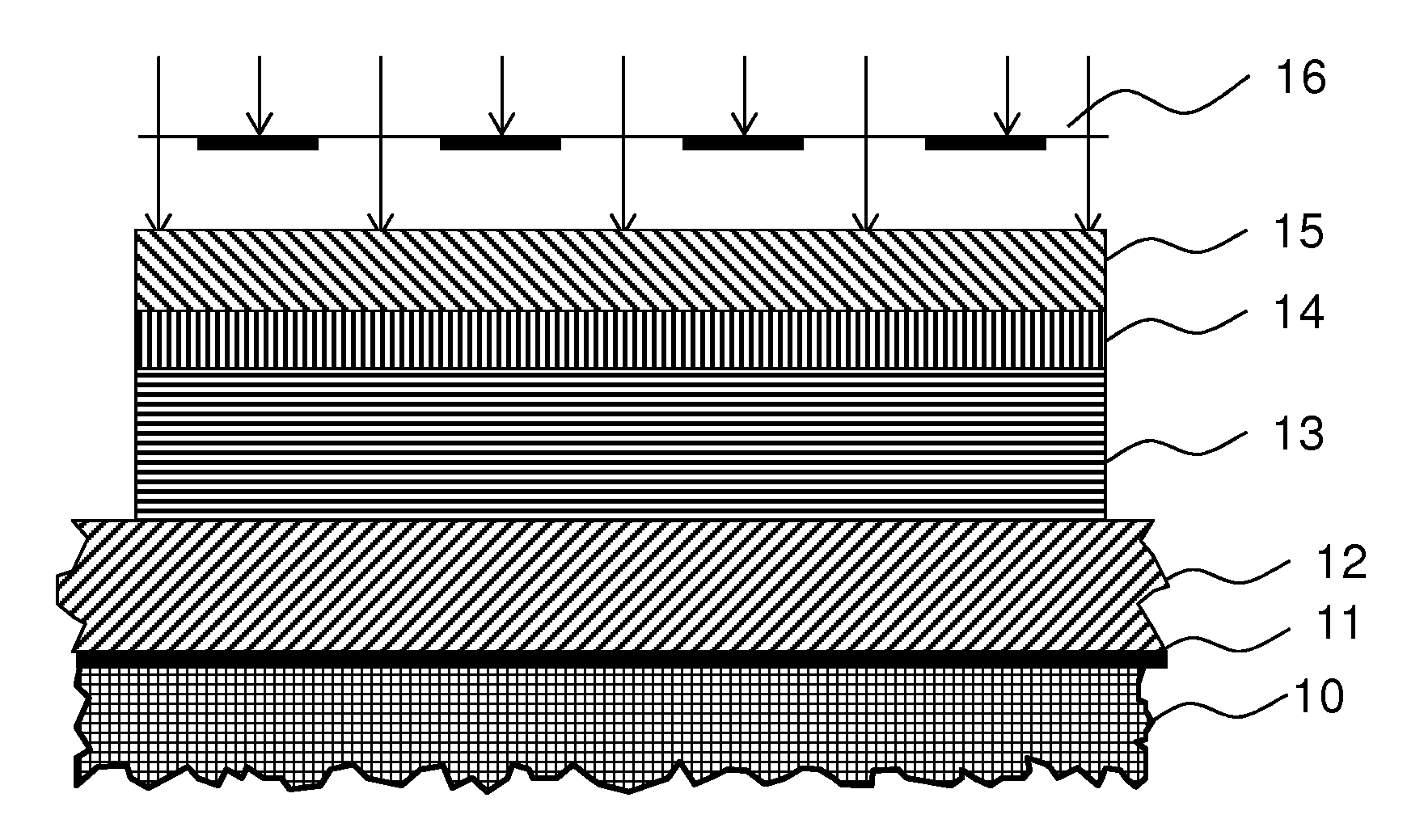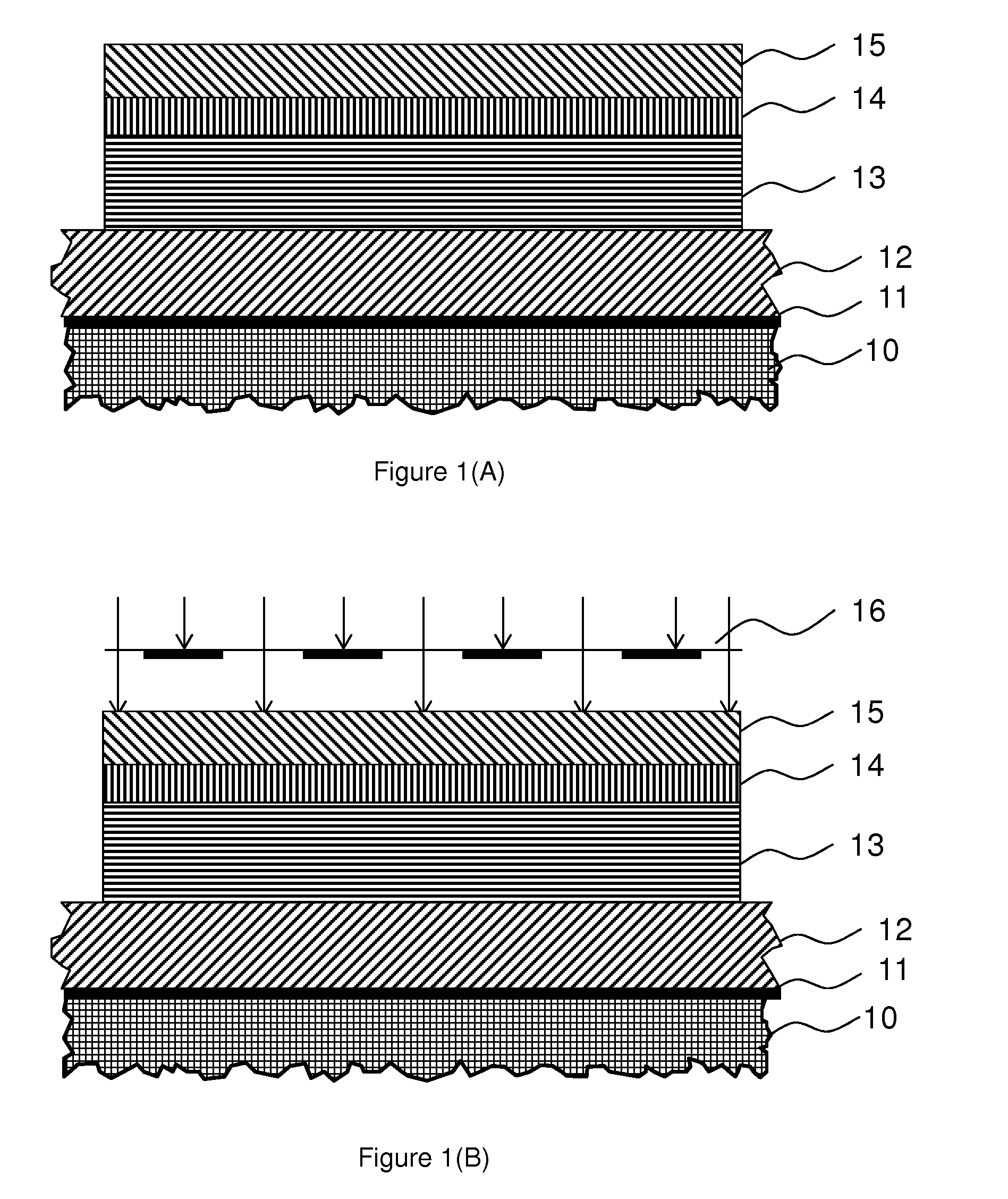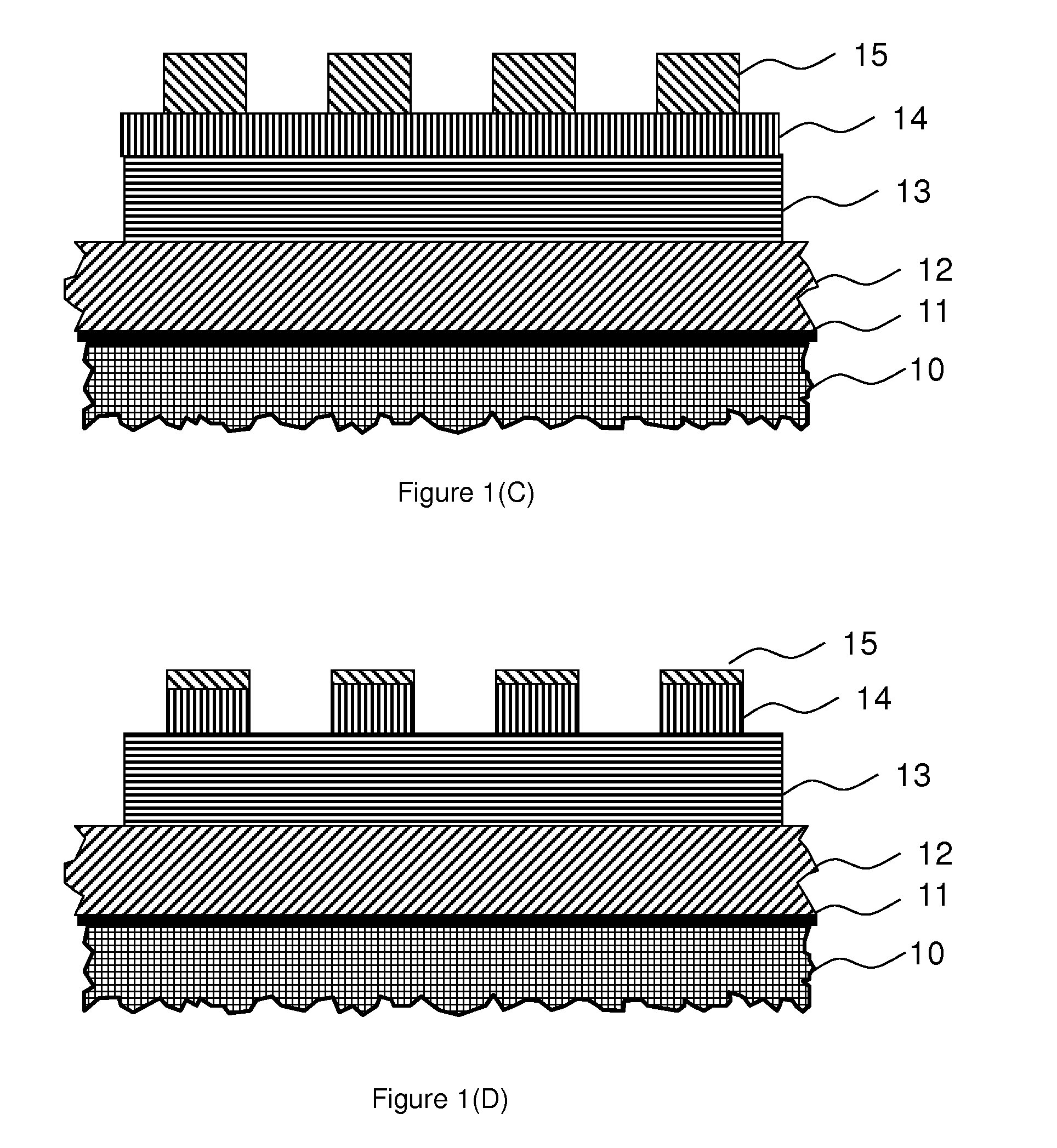Photo-imageable Hardmask with Positive Tone for Microphotolithography
- Summary
- Abstract
- Description
- Claims
- Application Information
AI Technical Summary
Benefits of technology
Problems solved by technology
Method used
Image
Examples
example 1
Synthesis of Polysiloxane and Polysilsesquioxane Resin I
[0078]
TABLE 1Monomers for Polysiloxane and Polysilsesquioxane Resin I:Methyl trimethoxy silane (Gelest, Morrisville, PA)65.2 gramsTetraethoxy silane (Gelest, Morrisville, PA)26.6 gramsPhenyl trimethoxy silane (Gelest, Morrisville, PA)5.06 grams2-(3,4-Epoxycyclohexyl)ethyl trimethoxy silane (Gelest,1.57 gramsMorrisville, PA)
[0079]Monomers in Table 1, together with 80 grams of propylene glycol methyl ether acetate (from Sigma Aldrich (Milwaukee, Wis.)), were mixed in a 500-mL three-neck round-bottom flask. Attached to the flask were distillation condenser, thermometer, and nitrogen inlet. Nitrogen flow was set at 200 milliliters per minute. With stirring, temperature of the mixture in the flask was raised to 95° C. in oil bath. Then, 50 grams of 3-nomal acetic acid were slowly added to the flask. Condensation reactions began. Volatile byproducts were distilled out of the flask and collected. Distillation completed in four hours. ...
example 2
Synthesis of Polysiloxane and Polysilsesquioxane Resin II
[0080]
TABLE 2Monomers for Polysiloxane and Polysilsesquioxane Resin II:Methyl trimethoxy silane (Gelest, Morrisville, PA)67.8 gramsTetraethoxy silane (Gelest, Morrisville, PA)26.6 grams2-(3,4-Epoxycyclohexyl)ethyl trimethoxy silane (Gelest,3.14 gramsMorrisville, PA)
[0081]Monomers in Table 2, together with 80 grams of propylene glycol methyl ether acetate (from Aldrich, Milwaukee, Wis.), were mixed in a 500-mL three-neck round-bottom flask. Attached to the flak were distillation condenser, thermometer, and nitrogen inlet. Nitrogen flow was set at 200 milliliters per minute. With stirring, temperature of the mixture in the flask was raised to 95° C. in oil bath. Then, 50 grams of 3-normal acetic acid were slowly added to the flask. Condensation reactions began. Volatile byproducts were distilled out of the flask and collected. Distillation completed in four hours. Heating stopped immediately after distillation is finished. Total...
example 3
Synthesis of Polysiloxane and Polysilsesquioxane Resin III
[0082]
TABLE 3Monomers for Polysiloxane and Polysilsesquioxane Resin III:Methyl trimethoxy silane (Gelest, Morrisville, PA)66.2 gramsTetraethoxy silane (Gelest, Morrisville, PA)26.6 gramsPhenyl trimethoxy silane (Gelest, Morrisville, PA)5.06 grams
[0083]Monomers in Table 3, together with 80 grams of propylene glycol methyl ether acetate (from Sigma Aldrich (Milwaukee, Wis.)), were mixed in a 500-mL three-neck round-bottom flask. Attached to the flask were distillation condenser, thermometer, and nitrogen inlet. Nitrogen flow was set at 200 milliliters per minute. With stirring, temperature of the mixture in the flask was raised to 95° C. in oil bath. Then, 50 grams of 3-nomal acetic acid were slowly added to the flask. Condensation reactions began. Volatile byproducts were distilled out of the flask and collected. Distillation completed in four hours. Heating stopped immediately after distillation is finished. Totally 102 grams...
PUM
 Login to View More
Login to View More Abstract
Description
Claims
Application Information
 Login to View More
Login to View More - R&D
- Intellectual Property
- Life Sciences
- Materials
- Tech Scout
- Unparalleled Data Quality
- Higher Quality Content
- 60% Fewer Hallucinations
Browse by: Latest US Patents, China's latest patents, Technical Efficacy Thesaurus, Application Domain, Technology Topic, Popular Technical Reports.
© 2025 PatSnap. All rights reserved.Legal|Privacy policy|Modern Slavery Act Transparency Statement|Sitemap|About US| Contact US: help@patsnap.com



